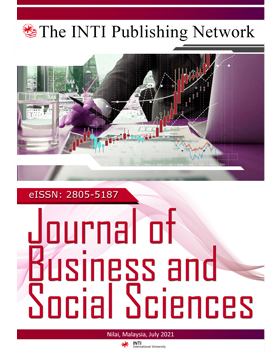Integration of Pakistan’s Cultural Heritage Products into Global Value Chains: Challenges and Opportunities
DOI:
https://doi.org/10.61453/jobss.v2025no16Keywords:
Intangible cultural heritage, Pakistan, global value chains, handicrafts, cultural heritage productsAbstract
Handicrafts, arch textiles, artisanal goods and other cultural heritage items represent the critical link between international trade and Intangible Cultural Heritage. As cultural and economic goods these products have been essential to identity, foreign exchange and employment in many economies. A country with rich and colorful traditions as Pakistani has, including Pashtun woodcraft, Balochi embroidery, Punjabi phulkari, Sindhi ajrak, etc., with other artisanal works allow a huge space for the absorption to a global universe of markets. However, given their economic and cultural significance, these products are underrepresented in global value chains (GVCs).
In this paper, we seek to understand the position of Pakistan’s cultural heritage products in GVCs and highlight the main challenges faced by artisans in acquiring a fair share of value from participation as well as the prospects for sustainable upgrading. Data: Secondary data have been collected from works of scholarly nature on GVCs (Centre for Development Studies, 2018; European Union, 2017), reports released by the UNESCO in relation to intangible heritage and national sources including the Trade Development Authority of Pakistan (TDAP,2022) and the Pakistan Bureau of Statistics (PBS 2023, 2024).
Results show significant bottlenecks such as the absence of coordination in production networks, poor implementation of international standards, lack of integration to the digital-market and ineffective authentication certification. It is being suggested that efforts of institutions in the promotion of handicraft exports as well as the initiatives for building sustainable value-chain are in isolation or isolated from structural-value chain development. Its consequent is that, in practice, craftsmen got locked up into low-value segment and intermediaries and traders became to get abnormally high profits. However, world trends towards responsible consumption, ethical commerce and cultural origin present fresh opportunities to expand.
The research identifies novel solutions such as public–private partnership for compliance and quality improvement, using digital stories through e-commerce platforms, and co-operative based or geographical indication certification models. The originality of this paper is to connect the intangible cultural heritage of Pakistan with global commodity trade by employing a value-chain approach. It is argued that the protection of cultural authenticity and economic integration are complementary objectives to be pursued in a context of sustainable development and cultural survival.
Downloads
Published
How to Cite
Issue
Section
License
Copyright (c) 2025 Journal of Business and Social Sciences

This work is licensed under a Creative Commons Attribution 4.0 International License.

